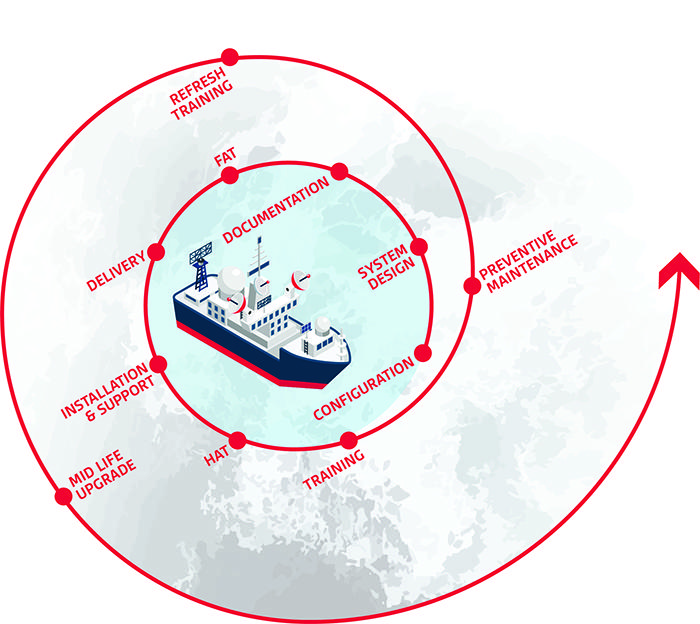White Paper Abstract
The Starting Point
When the ship owner — Navy or Coast Guard — has specified requirements for a CBRN (Chemical, Biological, Radiological and Nuclear) monitoring system to be implemented into a newly built ship or mid-life upgrade vessel, it is a challenging task for the shipyard to find the best, but also most cost-effective solution, to fulfill the end user’s needs.
To achieve a good result for all stakeholders — in addition to a good technical solution — it is important for the shipyard to select a competent and reliable partner. First of all, a CBRN system supplier has to understand CBRN detection and integration of detectors, but also the supplier must understand the end user’s needs and have a common interest with the shipyard.
Key Factors for a Successful Naval Project
After the right partner for the CBRN system project has been selected and the co-operation started, the key factors for a successful CBRN system implementation are:
Common understanding of the content and performance
- The CBRN world is normally a rather unknown world for shipyards and system integrators, so it is utmost important that the CBRN supplier is capable to assist and guide the ship builder to make reasonable selections. And also vice versa, each ship and its requirements are unique, so it is important for the CBRN supplier to listen to the shipyards’ wishes and adapt the design and delivery accordingly.
- To be able to optimize the CBRN monitoring capability, it is important to have a dialogue between the supplier and the shipyard before deciding the final system configuration. To avoid overfitting, the CBRN supplier should know and understand the actual needs and requirements. Being the expert in CBRN field, the competent supplier can optimize the system scope. Of course, a “bigger” CBRN system provides better coverage for the protection, but often the system can be optimized and still provide sufficient protection level.
CBRN System Implementation Phases
The following phases are basic steps in each naval CBRN system delivery project, for getting more information in each one of them, please download the full white paper.
- Phase 1: Design
- Phase 2: Agreement of the scope
- Phase 3: Manufacturing
- Phase 4: Testing
- Phase 5: Delivery
- Phase 6: Installation
- Phase 7: Commissioning
- Phase 8: Training
- Phase 9: Warranty
- Phase 10: After sales services

A CBRN system supplier should provide full life-cycle support to its solutions.

What is price for CBRN for 80meter vessel
Dear Philip,
Thank you for your enquiry, it will be addressed directly to our Application Manager.